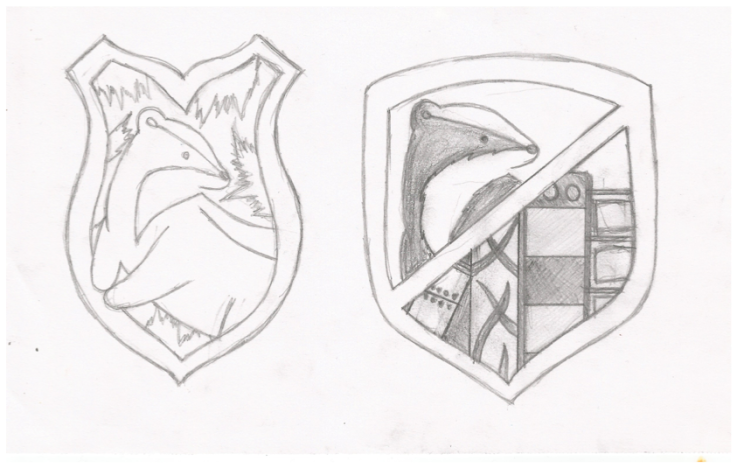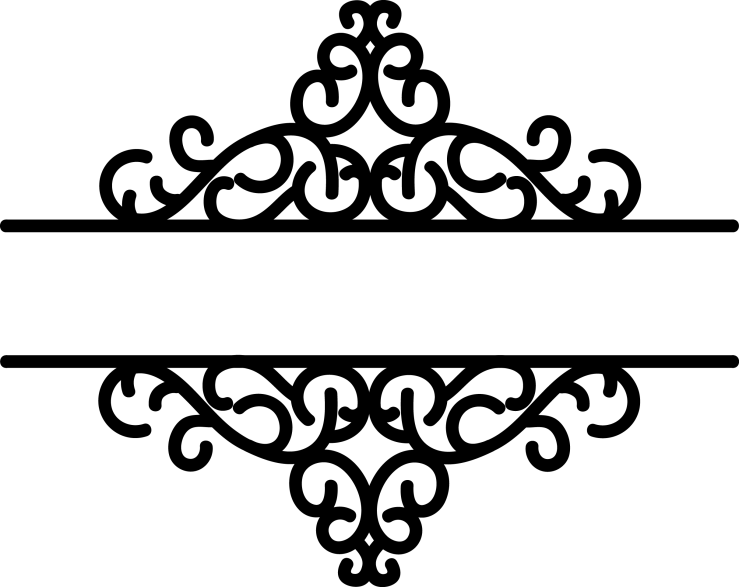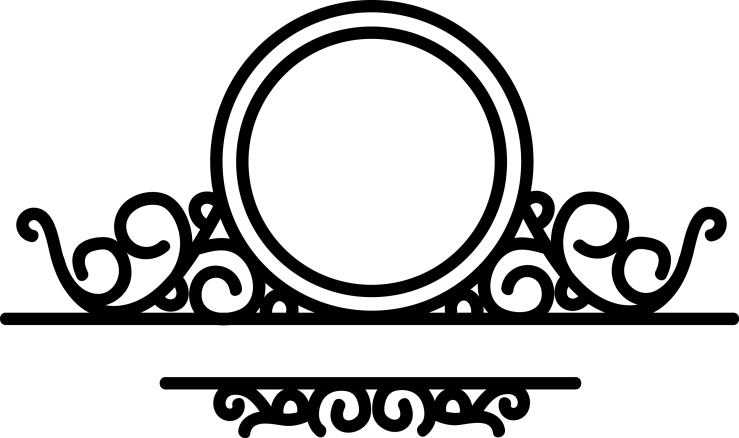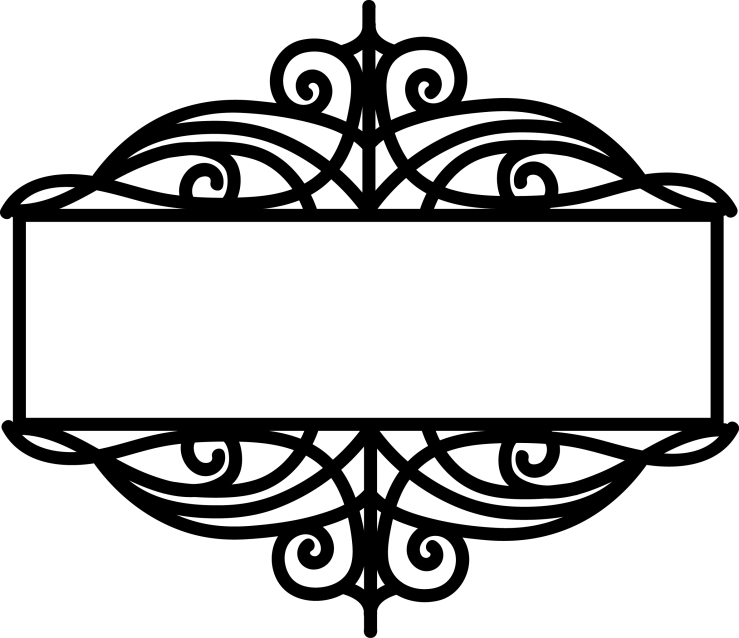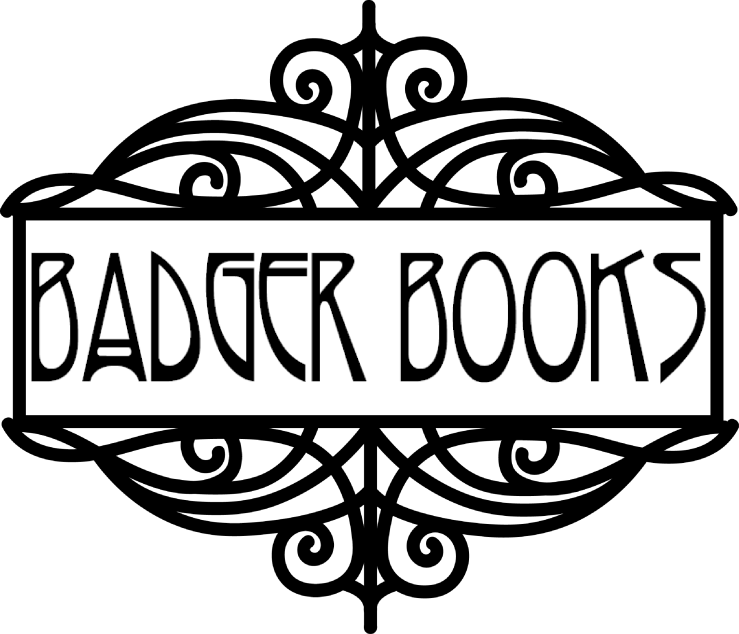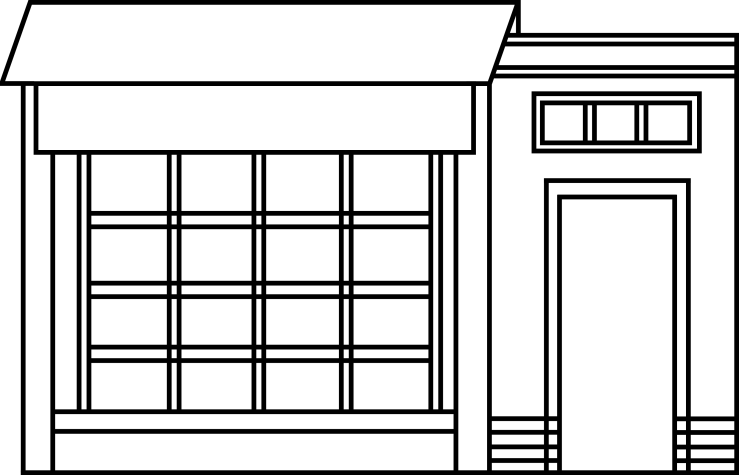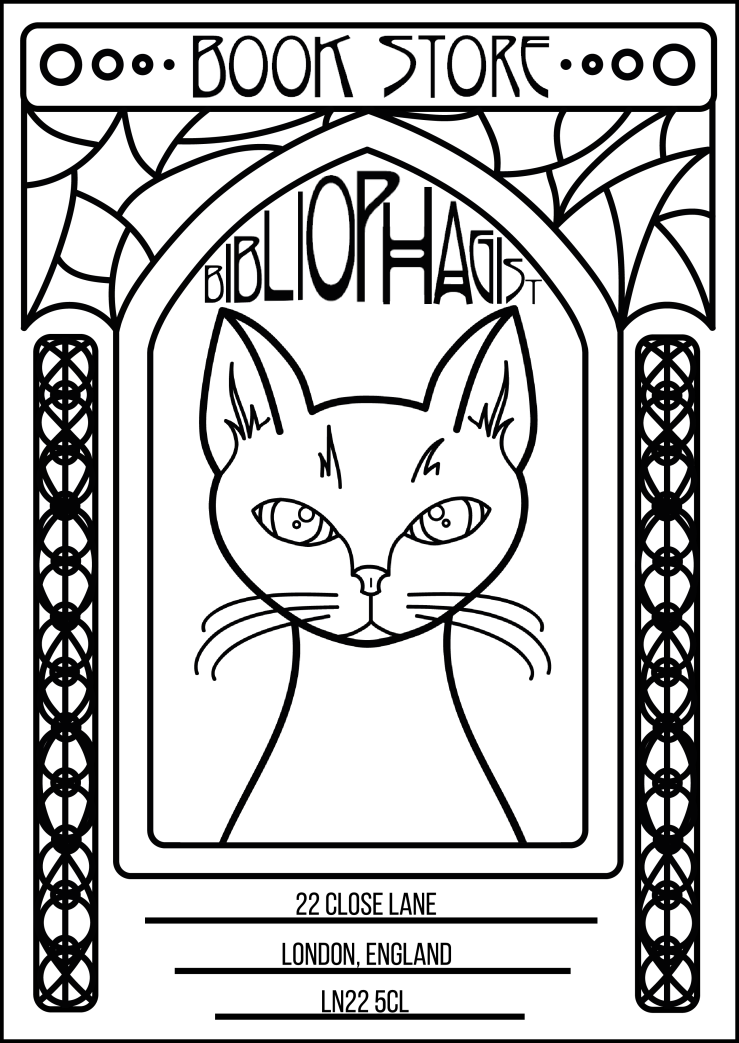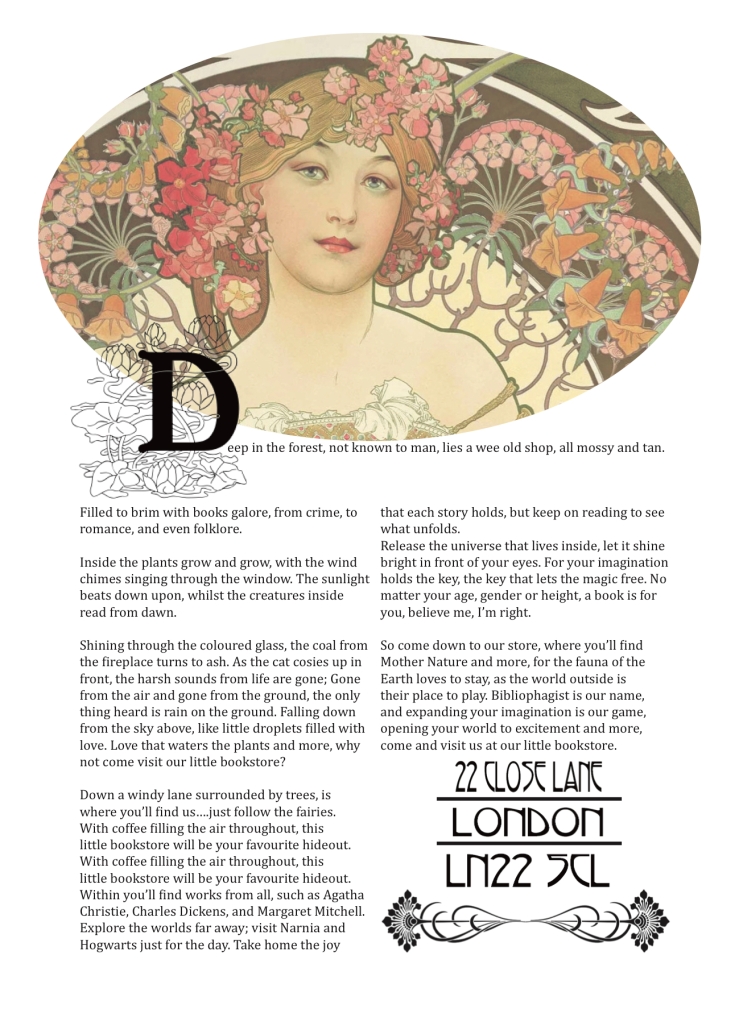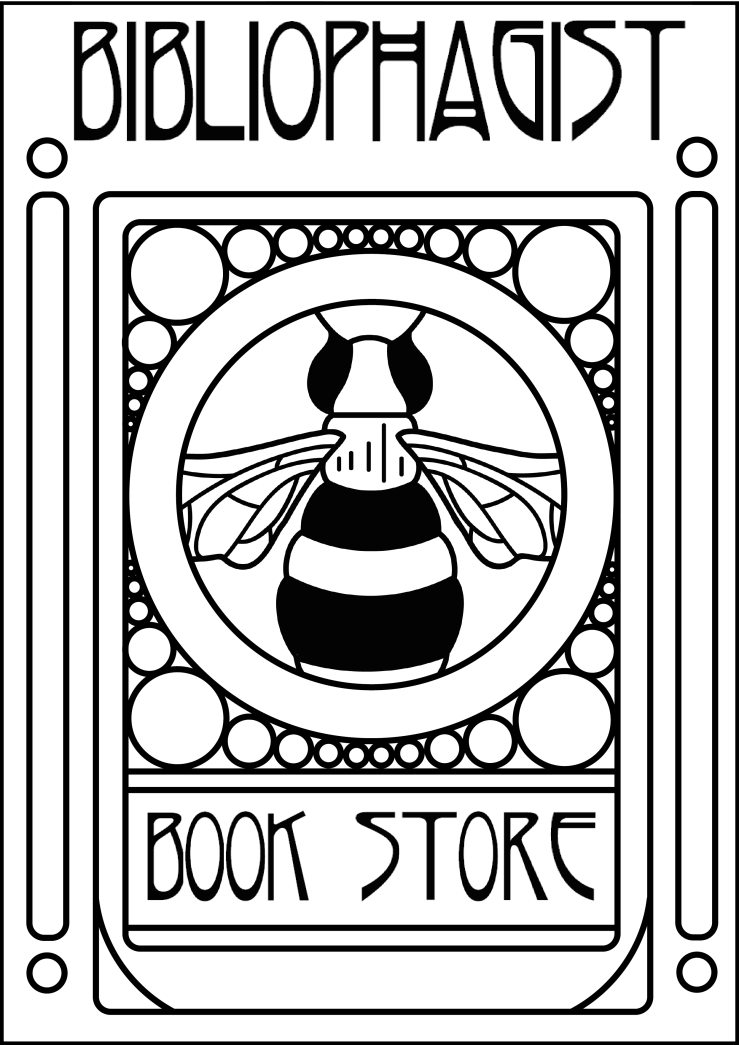Essay
“What is an ocean, but a multitude of drops?”
David Mitchell personifies the potential that individuals bring to the world, yet shows how they hide away their intelligence to conform to the ways of society. Mitchell plays on the fact that we, as humans, don’t ever dare risk to change. We’re stuck within a giant bubble that protects us and altering a minor moment within our lives, could cause us to stray from the norm. However, such fantasy and desire can be found within the pages of a book.
The given brief states “A small independent book shop is opening soon in Worcester. It doesn’t have a name or a brand, and therefore no retail concept…Your job as creative designer, is to come up with a concept, a name, a brand and then an identity.” From this, a range of prints should be created. Outputs such as; a mood board, external shop graphics, shop apparel (such as price tags and bags), a large format advertising poster, a small press advert, a leaflet or brochure, and a social media campaign are all needed to give the store it’s own identity.
To get a feel of how the store will work within the high street, research was made into the main competitors the shop faces. Here, Waterstones, WHSmith and The Works were found to be the top three selling bookstore chains, therefore, making them the ideal competition. After conducting a quick survey, it came to attention that out of the three said competitors, a vast majority of people preferred to buy from Waterstones. This resulted in further research being conducted into the chain, to show how the new shop will have to compare in order for a high profit to be made and a strong flow foot-traffic to consistent.
To begin creating an identity for the store, a logo and name must be decided upon. Here, the main attributes set to show a consistent flow throughout the store’s identity, were a warm welcoming, natural and homely feel, with a strong Art Nouveau-vibe. From this, a personality began to form around the Harry Potter house; Hufflepuff. It is said that a Hufflepuff holds the traits of loyalty, patience, hard work, dedication and kindness, all of which harmonise with the store’s character. Here upon, a logo started to form around the Hufflepuff mascot; a European badger. Nevertheless, the badger design was sooner curbed, in order for a stronger Art Nouveau inspired design to take it’s place. Here, the final logo design was rich with floral stylings, elegant shapes and a decorative finish, all consistent with the Art Nouveau design movement. To add the final touches to the store’s emblem, a name was given. Bibliophagist. Described by Collins Dictionary as “a person who devours books”, the given title was in complete conformity with the ongoing adaptation of the store’s identity.
Upon this completion, the shop’s character was further developed through an external design. Here, further research was made into the Art Nouveau design movement, and the designers behind it’s success. Such an influential designer from said period, was Scottish artist and architect Charles Rennie Mackintosh. Recognised for his strong floral themes, earthy tones and natural patterns, Mackintosh is thus well known for the design of the Glasgow School or Art, which has often been considered to be Mackintosh’s masterpiece.
From this, several initial sketch designs were designed, with the development of various concepts made further. Here, a final external look was settled upon, and the outside of the store would show both a strong bohemian and Art Nouveau influence, with a vast range of recycled materials being used within the build. A green roof would be located on the top of the building to act as a growing medium for the flora around, as well as to reduce heat loss and, to allow the store to collect it’s own water. As stated by the University of Toronto, “green roofs can help reduce heat loss and energy consumption during cold months.” As well as “reducing the need for air conditioning on hot days.” Thus proving the store will be able to help reduce the global warming impact on the environment, at the same time as saving the owners money on heat and electricity.
Once the external design was complete, concept generation began on the internal features of the store. Items such as tags and bags were fully designed to clearly represent the store’s identity. With the final concept of the store’s tags implying a strong sense of love and warmth, the added handcrafted feature gave a simply home-made touch. Taking strong inspiration from the Etsy store ‘The Altered Diaries’, the uniquely styled tags and labels were created using a vast collection of recycled materials, coloured buttons, stamps and much more. Pieced together with a simple bit of string, added greatly to the bohemian-stylings of the store.
Following on from the tag design, a strong bag concept started to form. The simple hand rendered designs showed a connection to the natural flora and fauna of the earth, with such characters as an Art Nouveau-styled cat and bee, being the main design. A final concept was decided upon, with the tote being made from fully recyclable materials as well as black and white ink (as to reduce production times and costs, as well as to increase how much of the bag can be recycled once used).
Once the physical appearance of the shop had been created, it was time to move onto the advertising portion. To start off with, a large form poster was created. This poster would be placed in a range of different locations such as bus shelters, hoardings, and ad shells. Because of this the final design shall be either screen printed, or printed via offset lithography, with an added lamination, to prevent moisture seeking in. If the poster is to be double sided, reverse printing shall be used in order to reduce the amount of paper needed. The inks used within the given printing methods are all weather/waterproof, due to the UV sealant added, thus meaning no ink will smudge or fade due to wear from the weather.
Again, the final poster design shows a strong connection to the Art Nouveau movement, with the use of floral stylings and natural shapes. As well, the typeface used (Rivanna, by Nick’s Fonts), works on the desired stylings of the Art Nouveau theme, with the long lettering and curved styles give a strong Nouveau-feel to the finished concept, allowing the store’s theme to be shown, and felt, throughout the poster as well. Moving on, the small press advert took the form of a niche magazine. It is said that, “Niches do not ‘exist’ but are ‘created’”, by marketing organisations to fill the requirements and desires of a specific segment of the population. Here, soft, earthy tones, complete with natural shaped and symmetrical stylings, have been used to contrast the given text. The text used, in poem form, add an extra sense of depth and definition to the store, as well as keeping the readers interested and intrigued.
To go along with the large format poster, and the small press advert, an additional leaflet was created. The final leaflet design shall be printed on 130gsm Eco Kraft Paper. The use of Eco Kraft Paper, not only reduces the cost for production, but will also mean the manufacture will not produce so much chemical waste during production, thus making it better for the environment in the long run. Printed on a standard A5 sizing, the design shall easily standout and contrast against all the other leaflets posted through your door.
As a final piece of advertisement, a social media campaign has been developed. BigCommerce.com states the definition of a social media campaign as a “coordinated marketing effort to reinforce or assist with a business goal, using one or more social media platforms.” After brainstorming a few different ideas, a final design was set upon. Here, all throughout the town where the store is located, there will be a vast range of solar powered fairy lights hanging from place to place. Attached to the lights will be arrows pointing in the direction of the store. When the audience begin to follow the lights, it will take them on a journey through the town and towards the shop. As they get closer, more and more lights will be placed on trees and plants around the store front, to light up the entrance, thus drawing people in.
The fairy lights used will be a simple, colourless glow, as to symbolise the natural light from the sun, and shall be a range of different shapes and sizes. The lights will be solar powered, allowing them to be lit 24/7, without the use of electricity and power supplies. To allow the design to fit in with the social media campaign side of the advertisement, selected members of the public will be videoed following the lights all the way to the store. Along the way, the camera will pan round the trail, to reveal the vast range of flora and fauna around. The videos will then be uploaded to social media such as Facebook, Instagram and Twitter, allowing the word to spread.
References
Draw Cut Ink Press. 2016. Top Linocut Artists to Follow on Instagram. [Online]. [Assessed 5 November 2016]. Available from: http://www.drawcutinkpress.com/top-linocut-artists-to-follow/
Pragel, M. 2011. Assignment Six. [Online]. [Assessed 5 November 2016]. Available from: https://meganpragel.wordpress.com/2011/03/
Duck Print Fine Art Limited Editions. 2010. Techniques. [Online]. [Assessed 5 November 2016]. Available from: http://www.duckprintfineart.com.au/techniques/
EMPIRE. [No Date]. Home. [Online]. [Assessed 7 January 2017]. Available from: http://www.empireonline.com
K, Vanessa. 2013. Who is the Target Audience for These Magazines?. [Online]. [Assessed 7 January 2017]. Available from: https://prezi.com/otgt-os0dx__/who-is-the-target-audience-for-these-magazines/
N, John. 2016. Empire’s Exclusive Rogue One Subscriber-Only Cover Revealed. [Online]. [Assessed 7 January 2017]. Available from: http://www.empireonline.com/movies/news/empire-exclusive-rogue-one-subscriber-cover-revealed/
Pottermore. No Date. Hufflepuff Common Room. [Online]. [Assessed 7 January 2017]. Available from: https://www.pottermore.com/writing-by-jk-rowling/hufflepuff-common-room
B, Michael. 2015. Skate The World. [Online]. [Assessed 7 January 2017]. Available from: http://www.thrashermagazine.com/articles/skate-the-world-interview/
J, Mark. 2016. 11 New Suicide Squad Character Posters. [Online]. [Assessed 7 January 2017]. Available from: https://www.comicbookmovie.com/suicide_squad/11-new-suicide-squad-character-posters-a142746
J, Dan. 2016. Suicide Squad Review. [Online]. [Assessed 7 January 2017]. Available from: http://www.empireonline.com/movies/suicide-squad/review/
Y, Desamba. 2013. 40 Creative Paper Bag Design Ideas. [Online]. [Assessed 7 January 2017]. Available from: http://jayce-o.blogspot.com/2013/01/paper-bag-design-ideas-packaging-design.html
026Designs. 2014. 12 Retro Labels/Price Tags. [Online]. [Assessed 7 January 2017]. Available from: https://creativemarket.com/026design/21602-12-Retro-Labels-Price-Tags
Mc, Louise. 2016. Suicide Squad: Watch Jared Leto Transform into the Joker in this Behind-the-Scenes Video. [Online]. [Assessed 7 January 2017]. Available from: http://www.digitalspy.com/movies/suicide-squad/news/a813921/suicide-squad-jared-leto-transforms-into-the-joker-behind-the-scenes-video/
C, Adam. 2016. ‘Suicide Squad’: Margot Robbie on Understanding Harley Quinn, Cracking the Joker, and Fighting in Heels. [Online]. [Assessed 7 January 2017]. Available from: http://collider.com/suicide-squad-margot-robbie-interview/
L, Dirk. 2016. What Suicide Squad’s Behind the Scenes Issues Were Actually About. [Online]. [Assessed 7 January 2017]. Available from: http://www.cinemablend.com/news/1541359/what-suicide-squads-behind-the-scenes-issues-were-actually-about
G, Rebecca. 2015. Techniques. [Online]. [Assessed 7 January 2017]. Available from: https://designschool.canva.com/blog/what-is-the-golden-ratio/
Anon. 2010. Ration in Other Medium – Magazine. [Online]. [Assessed 7 January 2017]. Available from: https://samcox891.wordpress.com/2010/10/21/ratio-in-other-medium-magazines/
M, Mike. 2009. Letter Pressed: Mike Maxwell. [Online]. [Assessed 6 November 2016]. Available from: http://www.pressingletters.com/tag/letter-pressed/
The Art Stuff. 2013. Deborah Klein – Artist. [Online]. [Assessed Assessed 6 November 2016]. Available from: http://artstuff.net.au/deborah-klein-artist/
K, Deborah. 2011. Deborah Klein’s Art Blog. [Online]. [Assessed Assessed 6 November 2016]. Available from: http://deborahklein.blogspot.co.uk/2011_03_01_archive.html
Beauton Art Gallery. 2012. Dance of Death. [Online]. [Assessed Assessed 6 November 2016]. Available from: http://www.beautonart.com/illustration-nudes-people-surrealism-dance-death-simon-vaeth
R, Olivia. 2014. Popular Printing Methods Today. [Online]. [Assessed Assessed 6 November 2016]. Available from: http://www.printingdeals.org/specials/popular-printing-methods.html
B Colin. [No Date]. What Is Etching?. [Online]. [Assessed Assessed 6 November 2016]. Available from: http://www.limitededitionprints.info/what-is-etching.html
C, Áine. 2013. Copper Plate Etching Prints. [Online]. [Assessed Assessed 6 November 2016]. Available from: https://www.behance.net/gallery/6849273/Copper-Plate-Etching-Prints
Anna. [No Date]. Hufflepuff Aesthetic. [Online]. [Assessed 7 January 2017]. Available from: http://weheartit.com/amapofyourstars/collections/99980135-hufflepuff-aesthetic?page=2&before=38318700
Anon. 2015. WH Smith PLC Preliminary Results Announcement for the Year Ended 31 August 2015. [Online]. [Assessed 7 January 2017]. Available from: http://www.whsmithplc.co.uk/docs/Press_Release_Prelims_2015_Combined_FINAL.pdf
A, Ashley. 2016. Waterstones Turns a Page as Sales Rise. [Online]. [Assessed 7 January 2017]. Available from: http://www.telegraph.co.uk/finance/newsbysector/retailandconsumer/12137948/Waterstones-turns-a-page-as-sale-rise.html
The Works Stores LTD. [No Date]. Techniques. [Online]. [Assessed 7 January 2017]. Available from: http://www.theworks.co.uk/page/corporate-financials
WHSmith. 2016. Home. [Online]. [Assessed 7 January 2017]. Available from: https://www.whsmith.co.uk/?gclid=CKSJjPSC29ACFei37QodQcMELg
Waterstones. 2016. Home. [Online]. [Assessed 7 January 2017]. Available from: https://www.waterstones.com
The Works. 2016. Home. [Online]. [Assessed 7 January 2017]. Available from: http://www.theworks.co.uk/?gclid=CJTw8oCD29ACFc277Qod7GcFKA
Anon. [No Date]. WHSmith. [Online]. [Assessed 7 January 2017]. Available from: http://www.leedsbradfordairport.co.uk/at-the-airport/shop/whsmith
Richmond Shopping Centre. 2015. The Works. [Online]. [Assessed 7 January 2017]. Available from: http://www.richmondcentre.co.uk/Store/the-works/
D, James. 2015. Quotes from Sir Alex Issigonis on the Mini and More. [Online]. [Assessed 1 November 2016]. Available from: http://www.thedailytoggle.com/quotes-from-sir-alec-issigonis-on-the-mini-and-more/
A, Keith. 2011. People: Sir Alec Issigonis. [Online]. [Assessed Assessed 1 November 2016]. Available from: http://www.aronline.co.uk/blogs/facts-and-figures/people/people-sir-alec-issigonis/
The Altered Diaries. 2010. Home. [Online]. [Assessed 7 January 2017]. Available from: https://www.etsy.com/uk/shop/TheAlteredDiaries?ref=l2-shopheader-name
T, McGee. 2010. The Only Guide You Will Ever Need to Art Nouveau. [Online]. [Assessed 7 January 2017]. Available from: http://chibirhm.livejournal.com/519432.html
T, Oliver. 2014. 10 Words Every Book Lover Should Know. [Online]. [Assessed 7 January 2017]. Available from: http://www.huffingtonpost.com/oliver-tearle/10-words-every-book-lover-should-know_b_5297284.html
History of Art Nouveau. [No Date]. Image Database. [Online]. [Assessed 7 January 2017]. Available from: http://artnouveau.randallbruder.com
F, Lili. 2015. 10 Words for Book Lovers. [Online]. [Assessed 7 January 2017]. Available from: http://blog.oxforddictionaries.com/2015/08/unusual-words-for-book-lovers/
Collins English Dictionary. [No Date]. Definition of Bibliophagist. [Online]. [Assessed 7 January 2017]. Available from: https://www.collinsdictionary.com/dictionary/english/bibliophagist
Cargo Collective. 2012. Art Nouveau Poster. [Online]. [Assessed 7 January 2017]. Available from: http://cargocollective.com/workingengine/Art-Nouveau-Poster
Design in English. 2012. Art Nouveau Posters. [Online]. [Assessed 7 January 2017]. Available from: https://designinenglish.wordpress.com/art-nouveau-posters/
H, Adam. [No Date]. Absinthe Label & Print. [Online]. [Assessed 7 January 2017]. Available from: http://www.velcrosuit.com/filter/illustration/Absinthe-Label-Print
Geekologie. 2013. Art Nouveau Posters for Studio Gihbli Film Characters. [Online]. [Assessed 7 January 2017]. Available from: http://geekologie.com/2013/09/art-nouveau-posters-for-studio-gihbli-fi.php
History of Advertising. [No Date]. Art Nouveau. [Online]. [Assessed 7 January 2017]. Available from: http://historyofads.old.the-voice.com/art-nouveau
Anon. 2008. Art Nouveau in Advertising. [Online]. [Assessed 7 January 2017]. Available from: https://apah.wikispaces.com/Art+Nouveau+in+Advertising
Forge22 Design. [No Date]. ROGUE! Art Nouveau Poster and Flyer for French Vaudeville Show. [Online]. [Assessed 7 January 2017]. Available from: http://www.forge22.com/projects/rouge-art-nouveau-poster-and-flyer-for-french-vaudeville-show/
L, Gerren. 2013. Art Nouveau & Art Deco as Design Inspiration. [Online]. [Assessed 7 January 2017]. Available from: http://www.designworklife.com/2013/08/27/art-nouveau-art-deco-as-modern-design-inspiration/
Business Dictionary. [No Date]. Niche Marketing. [Online]. [Assessed 7 January 2017]. Available from: http://www.businessdictionary.com/definition/niche-marketing.html
T, Sadie L. 2015. 25 of the Best Book Quotes of all Time. [Online]. [Assessed 7 January 2017]. Available from: https://www.bustle.com/articles/121359-25-of-the-best-book-quotes-of-all-time
S, Patrick. 2013. 22 of the Most Niche Magazines the World Has Known. [Online]. [Assessed 7 January 2017]. Available from: https://www.buzzfeed.com/patricksmith/the-most-niche-magazines-the-world-has-ever-known?utm_term=.ltZNeYnjL#.tyJzVGyvw
A, Brian. 2010. Is this the Most Niche Gaming Magazine in the World?. [Online]. [Assessed 7 January 2017]. Available from: http://www.kotaku.com.au/2010/11/is-this-the-most-niche-gaming-magazine-in-the-world/
L, Marcus. 2016. Kpop Magazines Researched. [Online]. [Assessed 7 January 2017]. Available from: http://chchsmarcus.blogspot.co.uk/2016/05/kpop-magazines-researched.html
O, Angela F. 2011. Art Nouveau. [Online]. [Assessed 7 January 2017]. Available from: http://gicde.blogspot.co.uk/2011/02/art-nouveau.html
C, Julianne K. 2010. Art Nouveau. [Online]. [Assessed 7 January 2017]. Available from: http://juliannecostello.com/project_posters_ArtNouveau.html
HappyBigBang. 2010. [PHOTOS] Big Bang Featured on MERLITO Kpop Magazine!. [Online]. [Assessed 7 January 2017]. Available from: http://happybigbang.blogspot.co.uk/2010/09/photos-big-bang-featured-on-merlito.html
BigCommerce. 2015. What is a Social Media Campaign? How to Increase Social Sales. [Online]. [Assessed 7 January 2017]. Available from: https://www.bigcommerce.co.uk/ecommerce-answers/what-is-a-social-media-campaign/
E, Emma. 2016. The Most Absurd Deadpool Marketing, from Tinder to Obscene Emoji. [Online]. [Assessed 7 January 2017]. Available from: https://www.wired.com/2016/02/deadpool-marketing/
Emirates. 2016. Jen’s Back and She’s Made a New Friend. [Online]. [7 January 2017]. Available from: https://www.emirates.com/english/flying/jennifer-aniston.aspx?utm_medium=social_organic&utm_source=youtube&utm_campaign=jenniferaniston2016&stop_mobi=yes
Chatbooks. [No Date]. Home. [Online]. [Assessed 7 January 2017]. Available from: https://chatbooks.com
Famous Authors. 2014. List of Famous Authors. [Online]. [Assessed 7 January 2017]. Available from: http://www.famousauthors.org/list
The Stencil Library. [No Date]. Motif No 72. [Online]. [Assessed 7 January 2017]. Available from: http://www.stencil-library.co.uk/artnouveau-motif-stencils/001796-ARN0125-4/motifno72stencil.html
Inkind Design. 2016. Art in Advertising: Art Nouveau. [Online]. [Assessed 7 January 2017]. Available from: http://www.inkind-design.com/single-post/2016/11/28/Art-in-Advertising-Art-Nouveau
FantastikGranollers. 2016. Nous Cartells Promocionales De “Suicide Squad”. [Online]. [Assessed 7 January 2017]. Available from: http://www.fantastikgranollers.cat/simple/blog/page/2/
Arcata Artisans. 2006. Marshal Mello. [Online]. [Assessed 7 January 2017]. Available from: http://arcataartisans.com/artists/marsha_mello/
ALocalPrinter. 2016. Leaflet Pritning. [Online]. [Assessed 7 January 2017]. Available from: http://www.alocalprinter.co.uk/products/flyers-leaflets/leaflets
OAAA. [No Date]. Bus Shelters. [Online]. [Assessed 7 January 2017]. Available from: https://oaaa.org/OutofHomeAdvertising/OOHMediaFormats/BusShelters.aspx
Hometalk. 2016. DIY Projects, Crafts and Ideas for the Home and Garden. [Online]. [Assessed 7 January 2017]. Available from: https://uk.pinterest.com/pin/486248090991320325/
L, Sonnet. 2005. Green Roofs in Winter: Hot Design for a Cold Climate. First Conclusive Data About Green Roofs on Exhibit at the Design Exchnage. [Online]. [Assessed 7 January 2017]. Available from: https://web.archive.org/web/20080411230309/http://www.news.utoronto.ca/bin6/051117-1822.asp
Simply The Nest. 2009. The Magical Nest By Night. [Online]. [Assessed 7 January 2017]. Available from: http://www.simplythenest.com/journal/2009/10/15/the-magical-nest-by-night.html
SHINE. 2016. Before I Die. [Online]. [Assessed 7 January 2017]. Available from: http://shineonstpete.com/portfolio/before-i-die/
Before I Die. [No Date]. Home. [Online]. [Assessed 7 January 2017]. Available from: http://beforeidie.cc/site/
O, London. [No Date]. Christmas Backyard Cinema at Winterville. [Online]. [Assessed 7 January 2017]. Available from: http://onin.london/christmas-backyard-cinema-at-winterville/
Admin. 2016. Fairy Lights Outdoor. [Online]. [Assessed 7 January 2017]. Available from: http://warisanlighting.com/fairy-lights-outdoor.html
D, Eunice. 2015. Top 10 Influential Social Medial Campaigns of 2015. [Online]. [Assessed 7 January 2017]. Available from: https://www.adherecreative.com/blog/top-10-influential-social-media-marketing-campaigns-of-2015
W, James. 2016. New Fantastic Beasts And Where To Find Them Character Posters Arrived. [Online]. [Assessed 7 January 2017]. Available from: http://www.empireonline.com/people/jk-rowling/new-fantastic-beasts-find-character-posters-arrive/
Mark. 2009. Candykiller—AS Card #25. [Online]. [Assessed 7 January 2017]. Available from: http://letterpressed.blogspot.co.uk/2009/04/candykiller-as-card-25.html
Mark. 2009. Mike Maxwell—AS Print #8. [Online]. [Assessed 7 January 2017]. Available from: http://letterpressed.blogspot.co.uk/2009/07/mike-maxwell-as-print-18.html
Mark. 2009. Drew Millard—New Mittens. [Online]. [Assessed 7 January 2017]. Available from: http://letterpressed.blogspot.co.uk/2009/02/drew-millward-new-mittens.html
C, Mary. [No Date]. Wild Animals. [Online]. [Assessed 7 January 2017]. Available from: http://linoprints.co.uk/wildanimals/
C, Mary. [No Date]. Domestic Animals. [Online]. [Assessed 7 January 2017]. Available from: http://linoprints.co.uk/domestic/
E, Craig. 2016. New Fantastic Beasts And Where To Find Them Image: Meet the Thunderbird. [Online]. [Assessed 7 January 2017]. Available from: http://screenrant.com/fantastic-beasts-empire-thunderbird-cover/
G, Rebecca. 2015. What Is The Golden Ration? What You Need to Know and How To Use It. [Online]. [Assessed 7 January 2017]. Available from: https://designschool.canva.com/blog/what-is-the-golden-ratio/
Creative Bloq Staff. 2016. The Designer’s Guide to the Golden Ratio. [Online]. [Assessed 7 January 2017]. Available from: http://www.creativebloq.com/design/designers-guide-golden-ratio-12121546
B, Jen. 2015. Inside the Art of Linocut Priting. [Online]. [Assessed 7 January 2017]. Available from: https://www.artfinder.com/blog/post/inside-the-art-of-linocut-printmaking/
Great North Art Show. [No Date]. The History and Process of Linocut Print: From Paupers to Picasso. [Online]. [Assessed 7 January 2017]. Available from: http://greatnorthartshow.co.uk/the-history-and-process-of-linocut-print-from-paupers-to-picasso/
OffsetPressMan. [No Date]. A Short History of Offset Printing. [Online]. [Assessed 00 7 January 2017]. Available from: http://offsetpressman.blogspot.co.uk/2011/09/short-history-of-offset-printing.html
Nole. 2012. The Printing Process: Letterpress Printing. [Online]. [Assessed 7 January 2017]. Available from: http://ohsobeautifulpaper.com/2012/01/the-printing-process-letterpress-printing/
British Printing Society. [No Date]. Letterpress Printing. [Online]. [Assessed 7 January 2017]. Available from: http://www.bpsnet.org.uk/letterpress.html
Salt Lake Mailing & Printing. 2013. History of Offset Printing. [Online]. [Assessed 7 January 2017]. Available from: http://www.saltlakemailing.com/printing/history-offset-printing/
Prepressure. [No Date]. The History of Print from 1900 t0 1999. [Online]. [Assessed 7 January 2017]. Available from: https://www.prepressure.com/printing/history/1900-1999
Las Vegas Color Graphics. 2015. The History of Offset Printing Explained. [Online]. [Assessed 7 January 2017]. Available from: http://www.lasvegascolor.com/history-of-offset-printing-explained/
Johannes Gutenberg Mainz. [No Date]. Home. [Online]. [Assessed 7 January 2017]. Available from: http://www.gutenberg.de
I, Hali. 2016. The Revival of Letterpress Printing. [Online]. [Assessed 7 January 2017]. Available from: http://www.slowlivingtoday.com/2015/home-garden/revival-letterpress-printing/
B, Ronda. 2011. History of Offset Printing. [Online]. [Assessed 7 January 2017]. Available from: http://www.brighthub.com/multimedia/publishing/articles/106466.aspx
VisualArtsCork. [No Date]. Etching: Type of Printmaking. [Online]. [Assessed 7 January 2017]. Available from: http://www.visual-arts-cork.com/printmaking/etching.htm
ElationPress. [No Date]. The History of Letterpress Printing. [Online]. [Assessed 7 January 2017]. Available from: http://elationpress.com/resources/the-history-of-letterpress-printing/
CreativeTechs Weekly Webinar Clips. 2006. Short Letterpress Documentary (Wonderful). [Online]. [Assessed 7 January 2017]. Available from: https://www.youtube.com/watch?v=Iv69kB_e9KY
W, George. 2016. FloralCapsNouveau Font. [Online]. [Assessed 7 January 2017]. Available from: http://www.1001fonts.com/floralcapsnouveau-font.html
Nick’s Fonts. 2002. Rivanna Font. [Online]. [Assessed 7 January 2017]. Available from: http://www.fontspace.com/nicks-fonts/rivanna
Stylist. 2010. The 25 Most powerful Book Quotes of All Time. [Online]. [Assessed 7 January 2017]. Available from: http://www.stylist.co.uk/books/most-powerful-book-quotes-of-all-time#art
Can I Quote You On That?. 2013. “My Life Amounts to no More Than One Drop in a Limitless Ocean. Yet What is any Ocean, but a Multitude of Drops?” – David Mitchell, Cloud Atlas. [Online]. [Assessed 7 January 2017]. Available from: https://sites.psu.edu/frupertpassion/2013/12/04/my-life-amounts-to-no-more-than-one-drop-in-a-limitless-ocean-yet-what-is-any-ocean-but-a-multitude-of-drops-―-david-mitchell-cloud-atlas/
Pottermore. [No Date]. Hogwarts Houses: Hufflepuff. [Online]. [Assessed 7 January 2017]. Available from: https://www.pottermore.com/collection/all-about-hufflepuff













